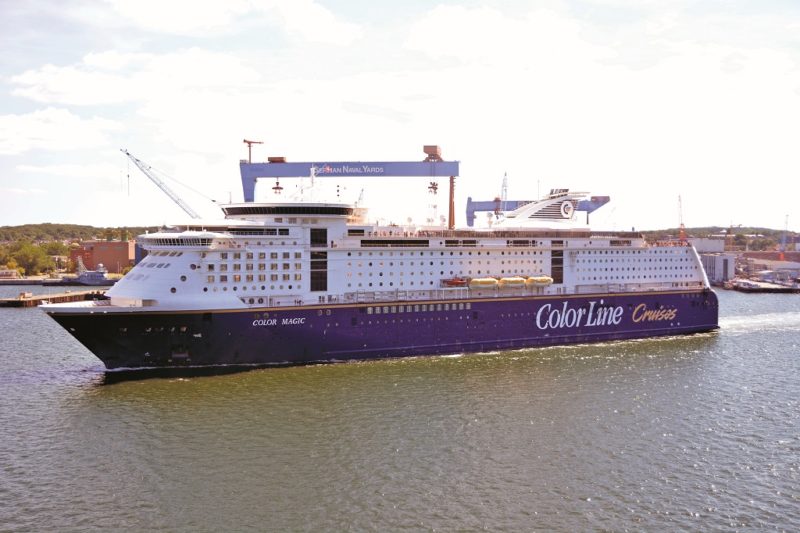
The Port of Kiel grew into one of the greatest naval bases in the world, with much of the German High Seas Fleet based in its magnificent harbour in deep, sheltered, spacious and ice free water. The City of Kiel is the capital and the most populous city in the State of Schleswig-Holstein with around 235,000 inhabitants. It lies on an inlet of the Baltic Sea, the Kieler Fjord, at the eastern end of the Kiel Canal and fifty miles north of Hamburg, and forty miles north west of Lubeck. The Kiel Canal does not follow a straight line, but curves in a north east direction from Brunsbuttel on the Elbe estuary to Rendsburg, and then eastwards to Holtenau on Kieler Fjord. Vessels departing from the two big locks at Holtenau or the two original smaller locks at Holtenau, turn left for the open fjord and the Baltic Sea, or turn right to move down to and enter the busy ferry and cruise ship Port of Kiel.
THE HANSEATIC LEAGUE
Normans and Vikings established small groups of settlers along their trading routes, the one at Kiel was established in the 10th century and called Kyle, Anglo-Saxon for a safe harbour. The origins of the Hanseatic League can generally be traced back to the rebuilding of the towns in North Germany in 1159 by the powerful Henry the Lion, Duke of Saxony and Bavaria, after he had captured this area from Count Adolf II of Schauenburg and Holstein. The Hanseatic League was a medieval, commercial and defensive confederation of merchant guilds, market towns, and ports stretching all the way from Holland to Kiel and Hamburg in Germany, and the Baltic States of Poland, Sweden, Estonia and Russia.
The Hanseatic League encompassed almost two hundred towns across seven countries that reduced trade barriers and gave protection against pirates and bandits. Duty free trading and a common legal system governing the merchants and their goods were the other chief reasons. By the end of the 13th century, Kiel, Lubeck, Hamburg and the Hanseatic League ports had the cohesive political means of merchant trading, backed up by a small army. Kiel had become a base for merchants from Saxony and Westphalia trading eastwards and northwards, with the word ‘Hanse’ appearing in many documents from 1267.
Kiel gained imperial privileges in 1267, and goods had to pass through the port and be trans-shipped either from the Baltic to the North Sea, or from the North Sea to the Baltic. The Hanseatic League lasted for centuries until power began to gradually drain away in the 16th and 17th centuries as Norse and Baltic States took over their trading routes. In name only, the Hanseatic League towns of Kiel, Lubeck, Bremen and Hamburg remained as the only members of the powerful grouping until 1862. The founding of the North German Foundation in 1867, the German Empire in 1871 under Kaiser Wilhelm I, and German reunification finally ended the Hanseatic League. However, two dozen modern German cities and towns including Kiel still use the words ‘Hanse’ or ‘Hansa’ on their official documents and titles today.
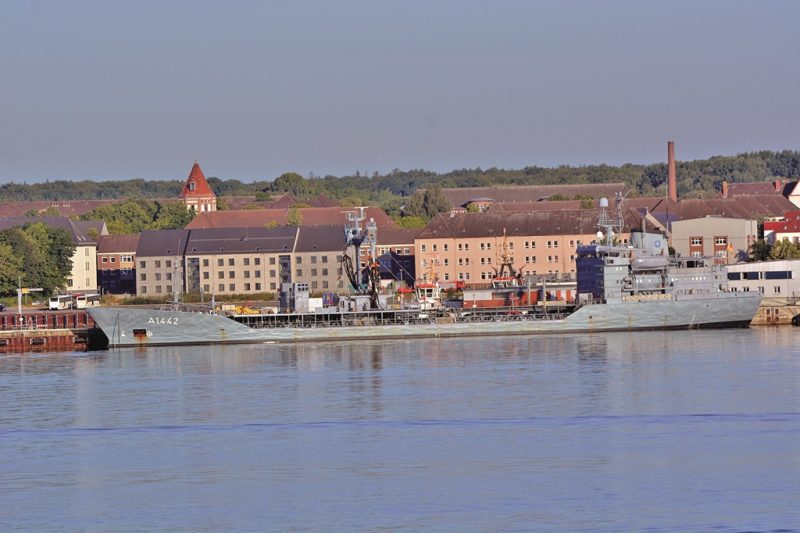
Kaiser Wilhelm I moved the Prussian fleet of warships to Kiel in 1865, making it an Imperial German port within the German Empire. The population of the port city grew rapidly from 19,000 in 1864 to around 200,000 by 1910. The Port of Kiel at this time was divided into five sections, as follows:-
Old Town Harbour with 7,550 feet of quays
Wik Harbour outside the Holtenau Locks of the Kiel Canal with 3,300 feet of quays
North Harbour inside the Holtenau Locks with 1,760 feet of quays
Kiel Naval Base with many piers for ‘Dreadnought’ class battleships, which moved through the Kiel Canal to join up with the German High Seas Fleet under Admiral Scheer in the Elbe for the Battle of Jutland. This was fought over 36 hours during the 31st May and 1st June 1916 with no victory for neither side as it turned out to be a strategic draw.
Vossbrook Harbour to the north of the canal entrance with a breakwater.
In 1918, the survivors of the German Navy after the Battle of Jutland were forced to move from Kiel and Wilhelmshaven and other German naval ports to Scapa Flow on the surrender of the German Battle Fleet. A revolt among German naval personnel in late 1918 had occurred during the German democratic revolution.
During the inter-war years, imports of the Port of Kiel were coal, oil, oilcake, maize, timber, bricks, salt and fish, while exports were industrial machinery, grain, flour, timber, manure and general cargo. In 1934, 20,636 steamers and motor ships of 7.781 million net tonnage passed eastward through the canal, and 20,601 ships of 8.054 million net tonnage passed westbound. The German Government operated the tankers Hansa, Brosen and Wollin during the inter-war years as naval oilers at Kiel Naval Base and Wilhelmshaven Naval Base, as well as the twin screw steamer Poseidon of 492 grt on marine duties. However, the German city and naval base of Kiel was almost completely destroyed by Allied bombing during World War II, with over 90% of the city buildings left in rubble and ruin, and Kiel Naval Base and Scheer Hafen and Tirpitz Hafen were destroyed and no longer fit for use as they were intended when built. A few military buildings on Arkonastrasse in the Wik district were all that remained of the former Kiel Naval Base.
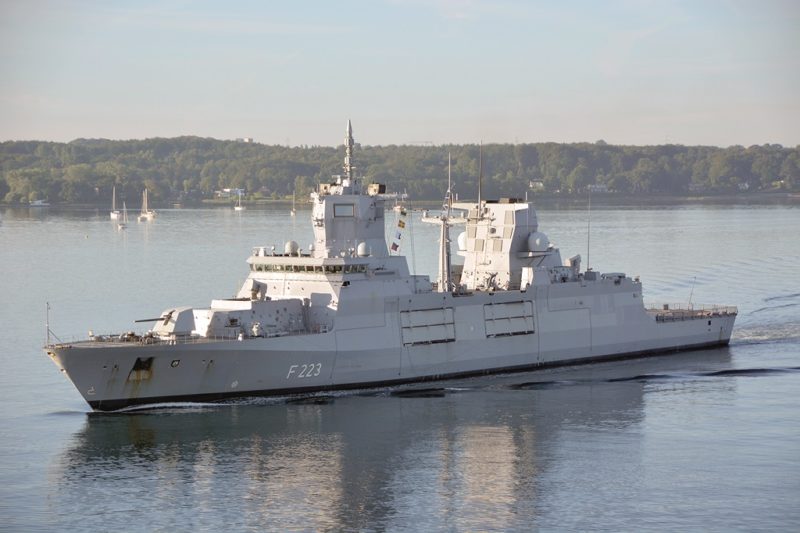
POST-WAR PORT OF KIEL
In the post-war years, the Port of Kiel began to be rebuilt from 1950 under the Marshall Plan of the U.S.A. to reinstate the wrecked cities and economies of Germany and the European Continent. Vessels with a draft of up to 13.0 metres could begin to proceed up Kieler Fjord, which is deep, buoyed and well lighted, and when passing Kiel Light Tower they had to call the Port of Kiel or the Kiel Canal and signal their names, gross registered tonnage, and whether a break in their voyage was needed before entering the Kiel Canal. Advance notice of six hours was required prior to arrival, and departing vessels must give two hours notice.
Pilots are available at Kiel Light Tower and Holtenau Pilot Station, with a water depth of 13.0 metres up Holtenau Roads, the south part of which is reserved for vessels for the Kiel Canal. Heikendorf Roads on the east side of Kieler Fjord, 2.5 miles south of Friedrichsort Light, affords good anchorage in up to 12.0 metres of water on a mud bottom, and is the designated anchorage for dangerous or oversize cargoes. Kiel Harbour contained the following facilities by the 1970s:-
Schwentine river mouth with a depth of 7.0 metres contained a fishing harbour with an ice plant and a covered fish market of 6,000m2, as well as a grain silo of 17,000 tonnes with an elevator with a discharge rate of 80 tons per hour. Rail tracks lead to the east of the harbour, which was the new port in 1984 of Osturhafen cargo port with a dredged depth of 14.0 metres and built one mile north of the Schwentine river mouth.
Binnenhafen Bollhorn (Inner Harbour) at the south part of Kiel Harbour with alongside depths up to 10.0 metres, and a quay length of 2,500 metres with recessed rail tracks along the full length of the quay. A recess at Bullhorn Quay formed two berths 18.0 metres wide, with movable ro-ro bridges designed for an axle weight of 70 tonnes. A storage area of 60,000m2 was used for containers, trailers and project cargo. At Sartorikai was a warehouse of 15,000m2 in area and a grain silo of capacity of 16,000 tonnes with two elevators of up to 80 tonnes per hour discharge capacity. This harbour also has forklifts and eight mobile cranes of up to 12.0 tonnes capacity.
Oslokai is a modern passenger and car terminal for ferries to Oslo with three bow or stern loading ramps with an alongside depth of 7.5 metres and wide ramps of 16.0 metres width. The Oslokai was very easy to access by car from the Kiel ring roads and motorways.
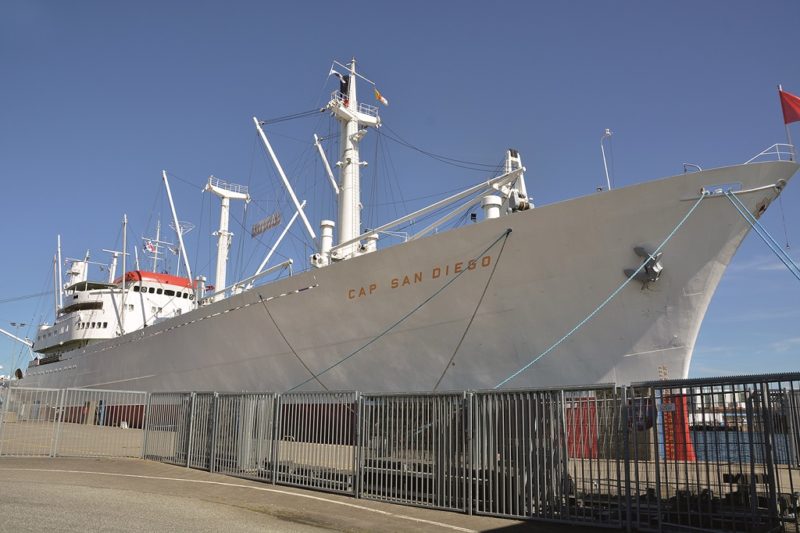
Scheer Hafen and Tirpitz Hafen, left forlornly empty at the end of World War II adjacent to the Holtenau Locks, had 300 metres of quay with rail tracks and alongside depths of 10.5 metres. Long reach container lifting cranes were available to an outboard reach of 40 metres, as well as a storage area for containers and bulk cargo of 8,000m2. A storage warehouse of 1,000m2 was used for unloading cargo for ships about to undergo repair work. A pipeline central jetty of 155.0 metres in length with an alongside depth of up to 12.0 metres led to a tank form of capacity 70,000m3 capacity, and a de-oiling station for bilge and ballast water.
Kiel-Wik situated on the south bank of the Kiel Canal close inside the locks with a quay of length 750 metres, alongside depth of 10.5 metres, for the unloading of coal for the gas works and the power station behind the quay, as well as oil berths and a tank farm and bunkering station at the west end of the quay.
Kiel Nordhafen and Kiel Nordmole quays of total length of 2,000 metres with alongside depths of up to 10.5 metres, with their west ends occupied by oil berths.
Kiel Harbour also had 27,000m2 of open and covered storage areas, six mobile cranes of up to 25 tonnes capacity, a grain silo of 40,000 tonnes capacity with two elevators of 125 tonnes per hour discharge capacity and a grain drying plant of 70 tonnes per hour capacity. Very good rail and road connections to the port.
Coal and oil bunkers, food provisions, and stores were available day and night in the Port of Kiel, with fresh water at 50 tonnes per hour from quay hydrants, oil and water also by barge. All types of medical service were available day and night. The Port of Kiel required three copies of the crew list, passenger list, tobacco and spirits list, stores list, as well as a deratting certificate, health, load line, safety equipment, tonnage, cargo and nationality documents from arriving ships. The Kiel Port Authority office was located at 1, Bollhornkai, and the local airport was at Kiel-Holtenau Airport with regular short flights to Hamburg. Kieler Verkehrs A. G. operated a dozen small passenger ferries around Kiel harbour.
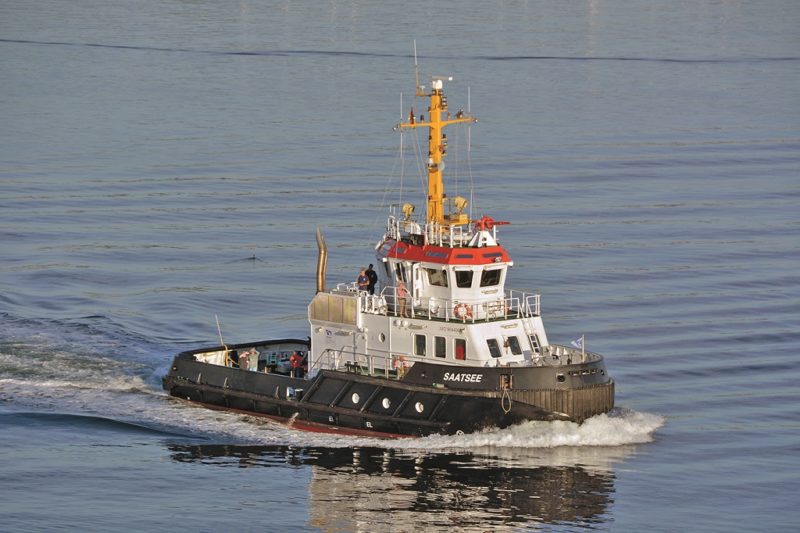
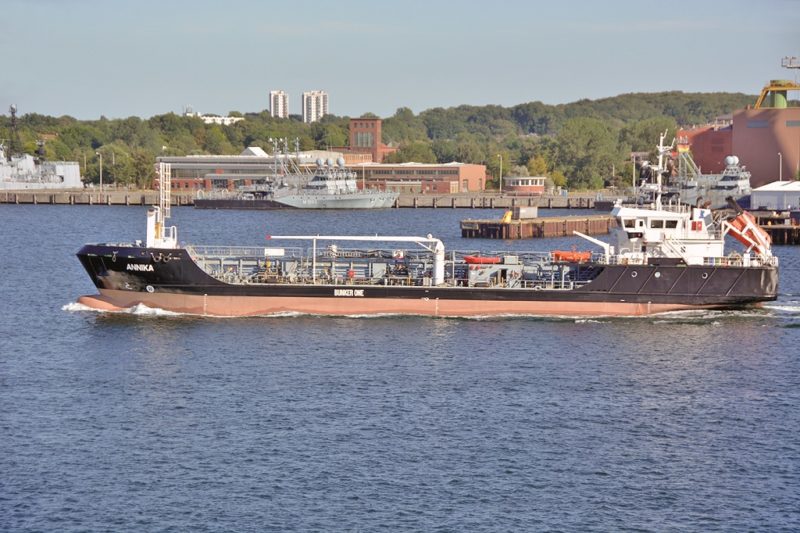
Since the mid 1980s, the Ostuferhaven Terminal has been expanded in five phases into a very large cargo port, and also the location of the Berth 1 Cruise Terminal, which was opened on 2nd June 2014, with cruise ship Costa Pacifica the first vessel to arrive there. The Port of Kiel handled 7.565 million tonnes of bulk, ro-ro and general cargo in 2021, an increase of 9.3% over the figure for 2020. Svenska Cellulose A/B brought in 1.5 million tonnes of forestry products in 2021. There are the following three distinct areas of the port:-
On the West side, the ferry and cruise ship terminals of Ostseekai, Schwedenkai and Norwegenkai. Ostseekai Terminal has two berths, Berth 27 and Berth 28, with a total quay length of 615 metres and an alongside depth of up to 10.0 metres. The terminal can serve over three thousand cruise passengers at the same time, and has excellent facilities for passengers.
On the East side, the Ostuferhaven cargo port with six berths numbered 1 to 9, of which Berth 1 is a new Cruise Ship Terminal. This cargo service hub for the Port of Kiel with services to the Baltic States and Russia, has three heavy lift cranes for grain, scrap metal, coal, project cargo and heavy lift cargo. The terminal has increased in area considerably from 4.35 hectares in 1984 to 42.3 hectares today or 108 acres. A new service has recently started between Kiel and Trieste in Northern Italy, and the terminal has received further funding of $10.75 million from the State of Schleswig-Holstein for future expansion. The services to the Baltic States cover the ports of Malmo, Gothenburg, Stockholm, Oslo, Klaipeda (Lithuania), Iggesund (Sweden), Sundsvall (Sweden) and Umea (Sweden). Berths 5 and 6 had wider ro-ro berth bridges fitted by Autumn 2022.
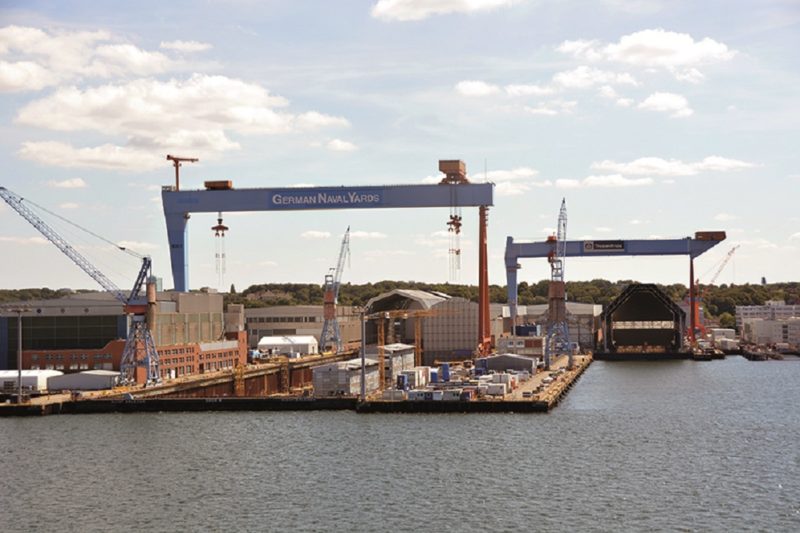
The Kiel Canal ports of Nordhafen and Nordmole, located at Holtenau adjacent and south of the Kiel Canal entrance locks. Nordhafen has Berths 32A and 32B of total length of 970 metres of quay, alongside depths of 9.5 metres, grain silos of 77,000 tonnes capacity, and over 16,000m2 of storage space. The port can serve ocean going ships and inland canal transport, and is near the Kiel-Wik Industrial Park. Nordmole has Berth 31 with a quay length of 375 metres, alongside depth of 9.5 metres, and 8,000m2 of open storage yard, 1,400m2 of covered warehousing, and an oil fuel depot of 36,000m3 capacity. The four main passenger terminals have the following capacities:-
Ostuferhaven Ostseekai Norwegenkai Schwedenkai
Berth Numbers
1 27&28 22 24&25
Passenger capacity
5,500 6,500 5,500 3,000
Draft
11.5 10.0 8.0 9.0
Quay Length (m)
1,700 615 395 720
Total Area (m2)
500,000 14,500 4,000 64,000
Cranage
3 – – 1
Shore Power – Available at all
Cargo Totals Handled at Port of Kiel in 2021 (Million Tonnes) during Covid
- Gothenburg route 2.10 +16%
- Klaipeda route 2.90 +9%
- Oslo route 0.60 +2%
- SCA Cellulose paper trade 1.50 -12%
- General cargo 0.46 -1%
- TOTAL 7.56 +9.3%
Containers, Ro-Ro Vehicles and Inter-Modal Units during Covid
2021 2020 Change
- Buses 4,869 5,403 -9.9%
- Containers (TEU) 28,774 23,489 +22.5%
- Cars 27,376 21,461 +27.6%
- Trucks, trailers 209,518 189,368 +10.6%
- Inter-Modal Units 30,633 32,927 – 7.1%
The Port of Kiel had a record cruise season in 2022 with 243 cruise ship calls and 835,000 cruise passengers, compared to 169 cruise calls in 2018 and 175 cruise calls in 2019.
CRUISE CALLS DUE IN 2023
- Aida Cruises – 62
- MSC Cruises – 35
- TUI Cruises – 25
- Costa Cruises – 25
- Fred Olsen Cruises – 16
- Phoenix Seereisen – 12
- P&O Cruises – 8
- Holland America Line – 6
- Norwegian Cruise Line – 6
- Hapag-Lloyd Cruises – 4
- Royal Caribbean International – 3
- Oceania Cruises – 3
- Regent Seven Seas Cruises – 2
- Disney Cruises – 2
- Carnival Cruises – 1
- Cunard Line – 1
- Saga Cruises – 1
- Azamara Cruises – 1
- Windstar Cruises – 1
- Hurtigruten Cruises – 1
- Noble Caledonia – 1
GRAND TOTAL – 216
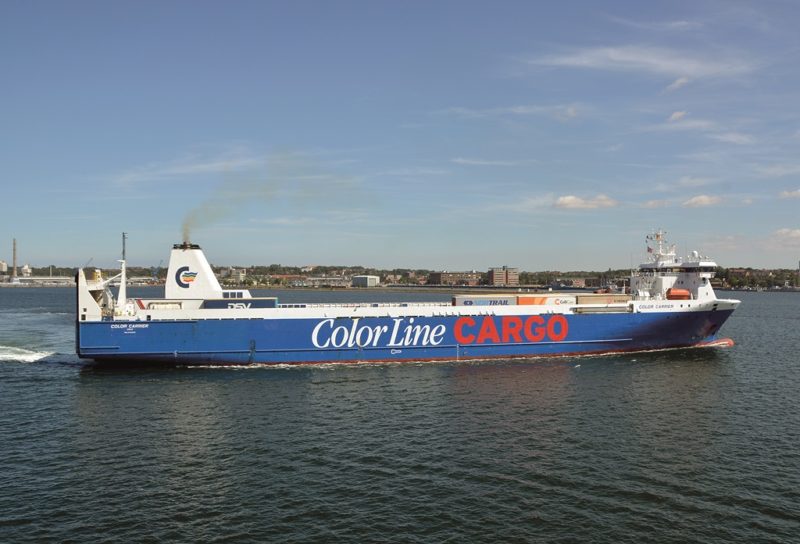
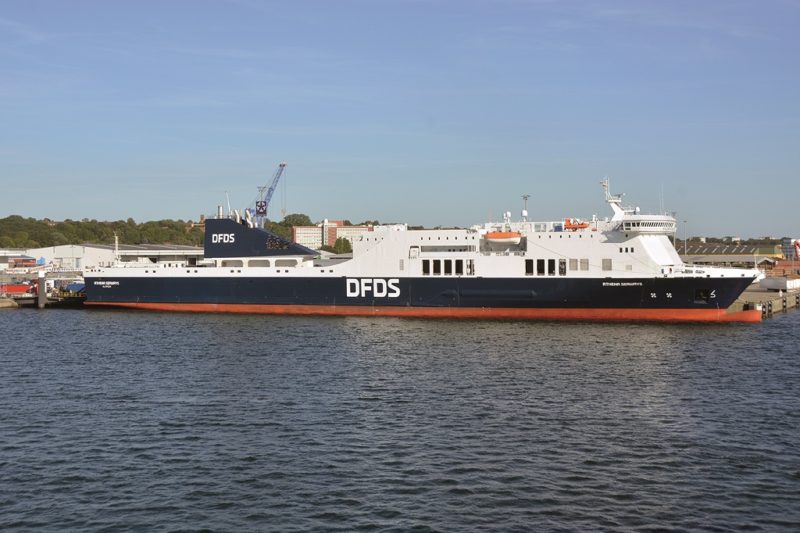
New cruise ships and those that have never called before at the Port of Kiel receive the traditional ‘water fountain’ display by port tugs. The NCL cruise ship Norwegian Dream takes things quite a lot further, and when she transits the Kiel Canal to the Port of Kiel she lowers her special masts and funnel to pass under the many bridges of the Kiel Canal.
The four cruise terminals are very modern with high glazed sides and good views of the port while passengers wait in the many rows of seats for the time to board for their ship for a ‘holiday of a lifetime’. The cruise lines of Norwegian Cruise Line (NCL), P. & O. Cruises, Hurtigruten Cruises and Regent Seven Seas Cruises all featured new ships making maiden calls at the Port of Kiel in 2022.
There were twenty cruise ships ‘homeported’ at the Port of Kiel during the 2022 season, with four from Aida Cruises, and three from TUI Cruises, and accounting for 70,000 cruise passengers of the year total. These passengers wished to also enjoy the travel destination of the City of Kiel itself before boarding their ship.
Kiel has many cultural and other attractions including the Kieler Woche (Week) in June of each year, one of the biggest annual festivals in Germany with an international fair selling food and craft articles from around the world and celebrity performers appearing every night.
There is also the Kiel Regatta Week at the same time with a spectacular display of sailing craft, large and small, and highly recommended for maritime people.
The Kiel Regatta has the largest competitive sailing events in Europe attracting three million visitors from all over Germany and neighbouring European countries.
There are also some of the largest Folk Festivals in Germany, as well as the City Art Galleries and the Botanic Gardens.
Shore ‘green’ electricity power was supplied to 19 cruise calls to prevent smoke emissions in the port.
The cruise ships Aidaprima, Mein Schiff 4, Mein Schiff 6, Artania and Nieuw Statendam were able to do this, with the Port of Kiel Authority expecting that triple this number of shore power provided calls will be given in the 2023 cruise season.
Kiel is one of 29 cruise ports in the world that have ‘green’ electricity supplies.

The 2022 cruise season at the Port of Kiel ended on 27th October 2022 with the visit of Vasco da Gama of Transocean Cruises.
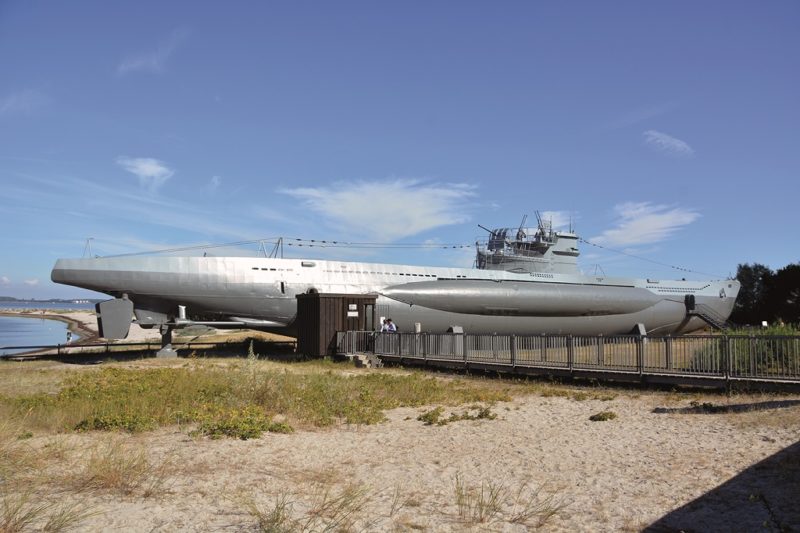
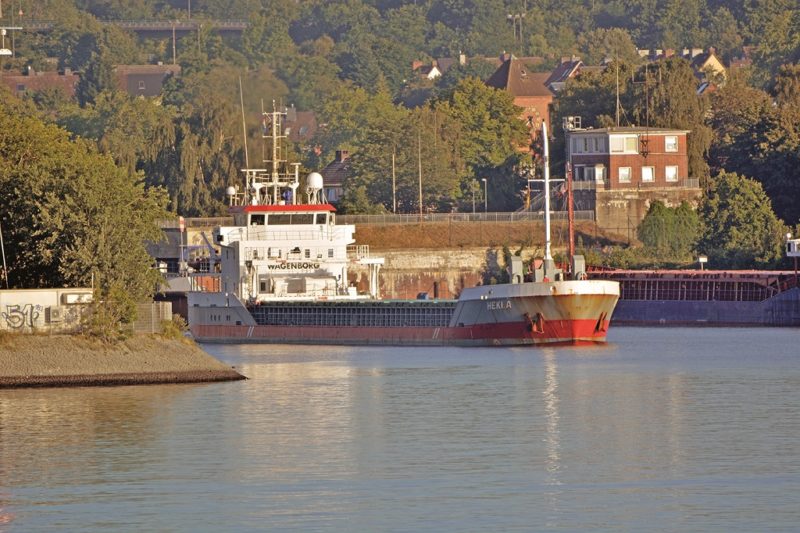
FERRY LINES OPERATING FROM KIEL
The Port of Kiel had 1,352 ferry departures during 2022 carrying a huge total of 1.6 million passengers. There are ten departures per week by Color Line to Norway, nine by DFDS Germany to the Baltic States, seven by Stena Line to Gothenburg, and two ro-ro sailings per week by SCA Logistics with forestry products and a few passengers. Color Line did not operate passenger sailings during the long Covid-19 virus emergency, although freight ferry Color Carrier continued to operate, and has only recently in November 2022 resumed passenger sailings.
Stena Line has operated ferries from Kiel since 1963 when founder Sten A. Olsson, through the Danish ferry company KL-Linjen A/S, began to foster good relations with the Kiel City leaders as well as local politician Rolf Renger. He announced in November 1964 that he would be beginning a new passenger ferry route between Gothenburg and Kiel within two to three years.
Stena Line thus took its first major step into longer European and worldwide ferry routes other than from Gothenburg to Denmark. The new passenger ferry Stena Germanica began to make two trips per day on the route in 1967, she had accommodation for 1,300 passengers, 200 cars and some trucks. She had high class cabins and public rooms, with diesel engines of 16,700 bhp and a service speed of 23.5 knots.
Stena Line celebrated 50 years of service on the Kiel to Gothenburg route in 2017, and had carried over twenty million passengers, three million cars and around 1.3 million freight units from the Majnabbe Terminal in Gothenburg since 1982.
The current ferries on the route for Stena Line are the sisters Stena Germanica and Stena Scandinavica, built in 2001 and 2003 respectively, with accommodation for 3,800 passengers. Stena Germanica sailed from Kiel to Gothenburg on 21st December 2020 with a ‘knocked down’ crawler crane of 165 tonnes capacity. The project cargo was delivered to Kiel in 27 dismantled components, which were reloaded onto seven of Stena Line’s own tractors of 45 tonnes capacity. Project cargo can also be loaded at the Polish port of Gydnia, which operates a Ro-pax service to Karlskrona using Stena Vision and Stena Spirit, with Stena Nordica taking mostly freight.
Color Line was established in 1990 when two Norwegian shipping companies, Jahre Line and Norway Line merged, the former had passenger ferries running from Oslo to Kiel, and the latter had ferry services running from Norway to the Tyne and Ijmuiden since 1986.
During 1990, Color Line also took over the Fred. Olsen ferry services from Norway to Denmark to expand the routes. A total of twenty second hand passenger ferries and fast ferries were used between 1990 and 2008, including Color Viking of 20,581 gt, Color Festival of 34,694 gt and Color Traveller of 17,046 gt. At the end of the 1998 summer season, the Norway to Tyne route was sold to Fjord Line of Norway.
Color Line has invested in big, new build passenger ferries since the 2000s decade, with the large sisters Color Fantasy and Color Magic of 75,027 gt built in 2004 and 2007 respectively by the Aker Turku yard in Finland. They have accommodation on the Oslo to Kiel route for 2,800 passengers, 750 cars, lane length of 1,280 metres with a crew of 250, and a one way ticket costs only E144 per person.
The fast craft sisters Superspeed 1 and Superspeed 2 are of 33,500 gt and carry 2,400 passengers and 764 cars. The hybrid powered Color Hybrid began service on 23rd August 2019 on the Sandefjord to Stromstad route in Norway with accommodation for 2,000 passengers.
DFDS (United Steamship Company) was founded in 1866, and has thus operated for 156 years on very many European, Mediterranean and Transatlantic passenger and cargo routes. A shareholding of 76.4% was acquired in June 2001 in Lisco A/S of Klaipeda with a full take-over of its Baltic ferry routes in 2005. The operations of DFDS Lisco A/S were fully integrated into DFDS Seaways following the acquisition of DFDS Lys Line A/S and Norfolk Line in 2010. Services included Kiel to Klaipeda (Lithuania), Klaipeda to Karlshamn (Sweden), and other services to Latvia and Russia.
Two large, cargo-based ro-ro design ferries were completed at the Guangzhou yard in China in 2022 as the twin funnelled Aura Seaways and Luna Seaways. This pair are the first of a new class of DFDS Ro-pax ferries of 56,043 gt with accommodation for 690 passengers, a big lane length of 4,500 metres, and a crew of 62. They have dimensions of overall length of 230.31 metres, moulded beam of 31.6 metres, and a loaded draft of 7.00 metres. They have twelve freight decks loaded through three stern ramps, and are powered by four big Wartsila oil engines to give a service speed of twenty knots. One of the pair operates the Klaipeda to Karlshamn route, while the other is planned to operate the Kiel to Klaipeda route from the end of 2022.
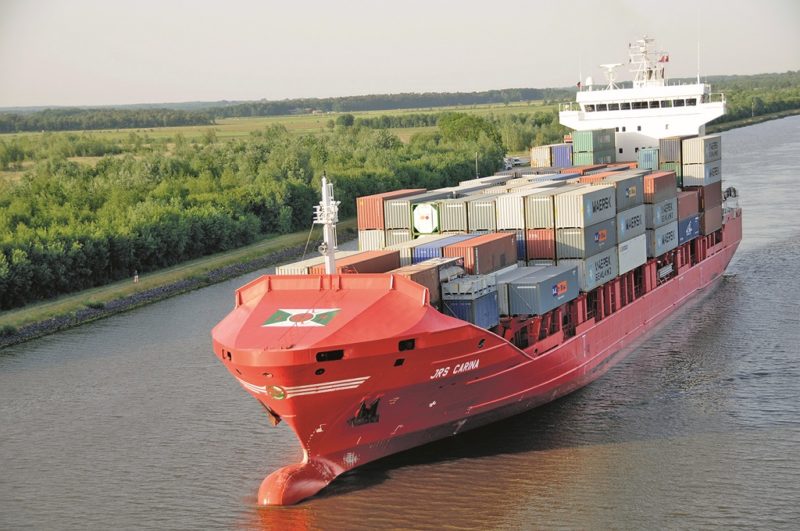
KIEL SHIPBUILDING YARDS
The Howaldtswerke-Deutsche Werft yard in Kiel is today part of Thyssen Krupp Marine Systems (TKMS). The Howaldtswerke yard was founded on 1st October 1838 in Kiel by August Howaldt and Johann Schweffel, and merged with the Hamburg yard of Deutsche Weft in 1968. The output has included many passenger and cargo ships, battleships Helgoland, Kaiserin and Bayern between 1911 and 1916, frigates, corvettes, gunboats and 64 U-boats during World War II. The latter were Type 201, Type 205, Type 206, Type 209, Type 209PN, Type 212, Type 214, Type 216, Type 218 and Type 800 submarines. One of the last U-boats to be built, U-995, is preserved as a museum near Kiel and is open to the public. She lies next to the Marine Ehrenmal Memorial in Laboe, which is a very tall brown stone memorial of height 68.2 metres that was built between 1927 and 1936 to commemorate all German soldiers, sailors and others that fell in World War I. It was rededicated on 30th May 1954 to the memory of all members of the Kriegsmarine, who lost their lives on German U-boats and surface ships in World War II. The memorial is looked after by the German Navy Association, with over 14 million people as visitors during the last twenty year period.
The Kiel yard initially built boilers and steam engines for small gunboats and warships, but the new name of Howaldtswerke was adopted in 1865 with the small steamer Vorwarts as the first vessel built. The yard produced a big total of 390 ships up to the turn of the century in 1900, including the steam gunboat Diogenes in 1881, which later became the American gunboat U.S.S Topeka (PG-35). A subsidiary yard had also been opened on the Adriatic Sea coast in 1892 for ships for the Austro-Hungarian Empire, and this yard still survives as the 3 May yard.
After the end of World War II, the Howaldtswerke yard was the only Kiel yard that had not been destroyed by Allied bombing or been dismantled. The yard production after 1950 from five slipways was prodigious with two dozen merchant ships completed in 1956 with fourteen Russian fish factory ships of 2,450 grt, and ten cargo-liners and reefers for Norwegian, German and Liberian owners. The cargo-liner Orpheus of 9,942 grt and 13,080 dwt had five holds with a grain capacity of 772,000 cubic feet served by a dozen derricks, and sailed in a career of fifty years after being converted into a Greek cement carrier in 1977. A Sulzer oil engine built by the yard gave her a speed of 15.5 knots. The yard was capable of building M.A.N. and Gotaverken diesel engines under licence up to 130,000 bhp per year, and steam turbine machinery up to 120,000 shp per year. The yard had four dry docks of length 940 feet, 870 feet, 744 feet and 658 feet, and a floating dock of lift capacity of 6,000 tons.
A small warship built in 1954 was later converted into a luxury yacht by Aristotle Onassis for his wife Christina and was renamed Christina O. The quartet of Zim Lines passenger ships Israel, Zion, Theodor Herzl and Jerusalem were built by the Deutsche Werft yard at Hamburg during 1955/57. The nuclear-powered cargo ship Otto Hahn was completed at Kiel in 1968, and the Tor Line passenger ferries Tor Britannia and Tor Scandinavia in 1975/76 as well as VLCC tankers of up to 250,000 dwt in the 1970s. The methane carriers Golar Freeze and Hoegh Gandria were built in 1977, and a very large number of container ships between 1979 and 2005. The ferry Prinsesse Ragnhild was built in 1981, and six ‘Superfast’ Ro-pax ferries during 2001/02. Cruise ships included Berlin, Astor, and Bahamas Celebration (ex Prinsesse Ragnhild), and frigates for the German, Colombian, Malaysian and South African Navies.
Severe competition from yards in Japan and South Korea after the merger with the Hamburg yard of Deutsche Werft in 1968 caused the closure of the Hamburg yard in 1985. In January 2005, the Howaldtswerke yard became a subsidiary of Thyssen Krupp Marine Systems (TKMS), which also owned part of the Kockums yard in Malmo, and 25% of Hellenic Skaramanga Yards in Greece. German Naval Yards Gmbh of Kiel is the direct successor today of the Howaldtswerke yard, and warship production of frigates, ‘Visby’ class corvettes, offshore patrol vessels and submarines has predominated recently.
Paul Lindenau set up a shipbuilding yard under his own name at Friedrichsort near Kiel in 1947, after an earlier yard was founded by the Lindenau family in Memel in 1919 as the Lindenau Gmbh Schiffwerks. The owner and all of his workforce fled westwards away from the advancing Soviet troops at the end of World War II. New ships were produced from 1952 including the cargo ships Himing and Tronstad of 3,050 dwt in 1956. The yard has two building berths of 400 feet in length and two floating docks of a lifting capacity of up to 10,000 tonnes for ship repair. The yard site is seven hectares in area, with 380 workers today, and built 40 single and double hull tankers of up 30,000 dwt between 1975 and 2005.
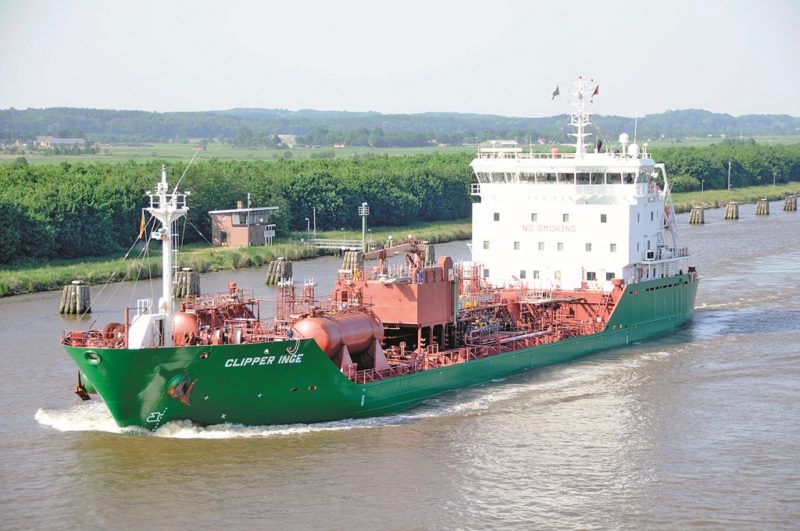
THE KIEL CANAL
The Kiel Canal or Nord-Ostsee-Kanal in German, which literally means the ‘North to East Baltic Sea Canal’ is an inland fresh water canal of length 61.2 miles connecting Holtenau on the Baltic Sea near Kiel with Brunsbuttel on the North Sea, and cutting the voyage by a fuel and time saving of 300 miles to and from London.
The maximum dimensions of vessels using the Kiel Canal are overall length of 235.0 metres, moulded beam of 32.5 metres, air draft of 40.0 metres and water draft of 9.5 metres. Pilotage is compulsory, with small repairs able to be done at both entrances to the canal, with dry dock facilities at both Kiel and Rendsburg.
United Baltic Corporation Gmbh, a subsidiary of the London UBC company, was both a shipbroker and a collector of tolls on the canal, with offices at both Kiel and Brunsbuttel.
The Kiel Canal is used by roughly the same number of ships as the Panama Canal and Suez Canal added together at 32,000 ships per year (90 daily). The figures for the Suez Canal are 18,174 transits per year (50 per day), and for the Panama Canal at 13,750 transits per year (40 per day).
The tolls charged by the Kiel Canal cover Transit tolls, Pilotage tolls and Helmsman tolls, with the United Canal Agency (UCA) Gmbh formed on 12th January 1998 by UBC Gmbh, Andreas Hansen Gmbh, and Zerssen & Company Gmbh. It operates from offices in both ends of the canal at Kiel-Holtenau and Brunsbuttel and employs 60 people from the previous companies, 29 people at Kiel, 27 at Brunsbuttel, and four accountants with one Manager.
The canal launch boat Baltic Swift had been sold in 1997, and the United Baltic Corporation of London subsidiary of Baltic Marine Services continued to provide bunker services at Kiel.
Kiel Canal Transit Tolls are calculated from the Gross Tonnage, overall length, beam, draft of the vessel, whether in ballast or laden, and whether the voyage is from the Elbe Pilot to Kiel, or from Kiel to the Elbe pilot, or from Hamburg to Kiel or Kiel to Hamburg.
The Transit Tolls do not cover the full operating costs of the canal. Pilots board vessels two hours before arrival at Brunsbuttel or Holtenau, and there is a strict speed limit of 8 knots. During Covid-19, Kiel Canal Transit Tolls were suspended for six months from June 2020 to the end of December 2020 as record low bunker prices meant more ships bypassed the canal and rounded the Jutland peninsula instead. Pilot charges and Agency fees remained payable during the six month period. Ships that are regular users of the Kiel Canal are given a 50% discount of the transit tolls, which vary from €30 to €55 for a small yacht of 16 to 30 metres in length.
The Kiel Canal is narrow in many places, with the canal width ranging from 162.0 metres to only 102.5 metres. As in the Suez Canal, the canal width is considerable reduced at the bottom of the canal, and deeply laden ships must keep to the centre of the canal.
There are eleven passing places and four turning places with compulsory pilots onboard to carry out the rules for oncoming big ships to give way and moor at the many bollards provided at the side of the canal. Sailing ships and lighters used to be towed through the canal by tugs owned by the Reichkanalsamt. Subsequently, a detailed traffic management scheme of rules for navigation has been in operation using ‘passage numbers’ for sections of the canal (6 to 8), and the ‘traffic group numbers’ for ships in the range 1 (small) to 6 (large). The scheme rules for oncoming ships are that if the sum of the traffic group numbers exceeds the passage number for that segment of the canal, then one of the ships has to wait at a side until the other ship has passed through. Ships can only overtake in the sidings due to safety reasons.
The scheduling of ships and the traffic management are worked out by the United Canal Agency (UCA) Gmbh a few hours before the estimated time of arrivals (ETA) of the ships arriving that day.
The amount of cargo passing through the Kiel Canal increased by 150% during the period from 1999 to 2008, and a total of 33,522 ships carrying 98 million tonnes in 2011, and 30,542 ships carrying 88 million tonnes in 2018.
However, the infrastructure of the canal is over a century old, and the canal was closed for one week in March 2013 due to repairs to two lock gates at the western end at Brunsbuttel. Ships greater in length than 410 feet were forced to take the longer route around Denmark.
Ships save on average on their voyages through the ‘short-cut’ a saving of 280 nautical miles by going through the Kiel Canal instead of around the Skaw, and the savings in fuel consumption and time of the voyage are normally greater than the Kiel Canal charges.
SFK (Kiel Tug and Ferry Company) has since 1996 provided four tugs for the big ships that proceed under tow through the Kiel Canal. These are the modern tugs Falckenstein, Kitzeberg, Holtenau and Stein, which are provided at bow and stern for the transit. The majority of the traffic on the Kiel Canal consists of regular feeder container ships of a small ship size as well as low air draft small coasters. Thus, four tugs are all that are needed, with SFK also operating several passenger ferries on Kieler Fjord and across both sides of the Port of Kiel.
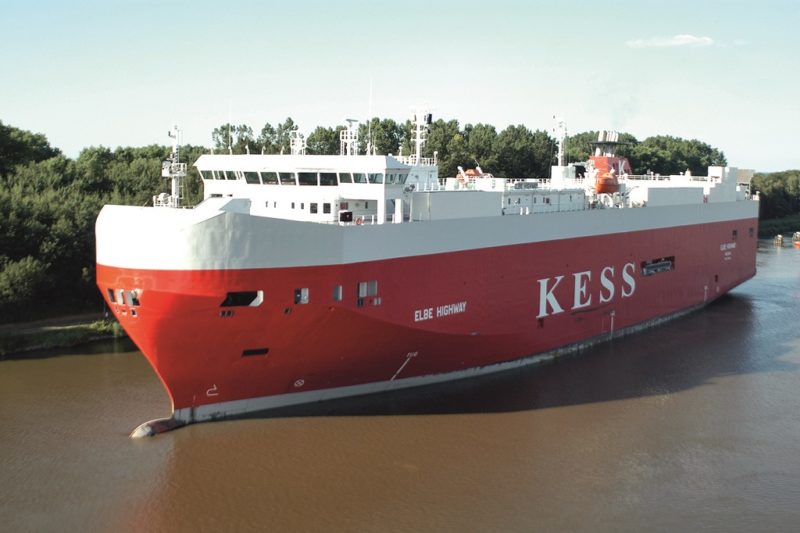
HISTORY OF THE KIEL CANAL
On 3rd June 1887, Kaiser Wilhelm I laid the foundation stone of the Kiel Canal at Holtenau near Kiel. The canal took eight years to build and up to 8,900 workers were employed on the project during that time. Some 42 river dredgers and dry excavators, 75 tugs, 97 locomotives and fifty traction engines were in use to remove 80 million tonnes of earth and carry it away. During the early hours of the morning of 20th June 1895, the German Imperial Yacht Hohenzollern with the Kaiser Wilhelm II (grandson of Kaiser Wilhelm I) on board, slipped into the lock at Brunsuttel and shortly afterwards he cut a ribbon to officially open the canal. The twin funnelled paddle driven British Royal Yacht Osborne followed, she had been built at Pembroke Dock in 1870 and had replaced the much-loved Victoria and Albert royal yacht. The Duke of York, later King George V, was onboard, and she was followed by 23 steamers and warships from Austro-Hungary, Denmark, France, Holland, Italy, Norway, Sweden, Portugal, Romania, Russia, Spain, Turkey and the U.S.A.
In the first decade of the new century, in order to meet the increasing traffic and the naval expansion of Germany, the cross-section of the canal was considerably widened between 1907 and 1914. Two much larger locks were installed at the same time at both Brunsbuttel and Holtenau with dimensions of 1,082 feet long, 148 feet wide and 39 feet deep.
On 20th June 1995, the 100th Anniversary of the canal was celebrated with a convoy of ships travelling from Brunsbuttel to Holtenau and led by the German sailing barque trainer ‘Gorch Foch’, built in 1958 and based at Kiel.
The Kiel Canal was not the first canal to connect the North and Baltic Seas, as the Eider Canal of 1784 used stretches of the River Eider for the link between the two seas. The Eiderkanal was a 27 mile length part of a 109 mile waterway from Kiel to Tonning on the West Coast and the mouth of the Eider. It had a depth of only three metres and was only 29 metres wide, but sailing coasters of up to 300 grt used the link for a century before the Kiel Canal was opened. The present canal is linked at Oldenbuttel to the navigable Eider river by the short Gieselau Canal. The German Imperial Navy as well as German merchants needed a better and wider link after the founding of the German Empire in 1871, without the need to sail around Denmark.
The first vessel to use the canal was the small warship Jagd sent through in late April 1895 to determine if it was ready to use. A film in the Science Museum in London preserves footage of the opening ceremony by the Kaiser.
Many small vessels use the Kiel Canal not only to save fuel and time, but mostly to avoid the storms in the Skagerrak and Kattegat in winter on the longer voyage around the Jutland peninsula. After World War I, the Treaty of Versailles required the canal to be open to vessels of commerce and war of any nation at peace with Germany, while leaving it under German control. The Third Reich repudiated the international status of the Kiel Canal in 1936, but it regained this status ten years later.
The loaded Panamax bulker Ever Leader of 74,000 dwt was the biggest ever ship to pass through the Kiel Canal, and was very close to the limits of overall length 235.0 metres, moulded beam of 32.5 metres, and a loaded draft of 9.5 metres with an air draft of 40.0 metres.
The last two large twin funnelled United Baltic Corporation of London ro-ros of Baltic Eagle built in 1979 and Baltic Eider built in 1989 were getting close to these limits at around 157.67 metres in length, 25.3 metres width, and 7.3 metres loaded draft, with Baltic Eider continuing to use the Kiel Canal in both directions to Helsinki and other Finnish ports to save time until she was sold off in August 2005.
Numerous passenger ferries, free of charge, cross the Kiel Canal for use by the local residents at Brunsbuttel, Ostermoor, Kudensee, Burg, Hochdonn and Hohenshorn. Vessels of Group 6, the biggest size with length exceeding 200 metres and/or 28 metres beam, have to accept tug assistance when approaching Brunsbuttel Locks from the Elbe.
Waterclerks board vessels upon arrival in the locks for clearance, giving the clerks their International Tonnage Certificate copy and a copy of the crew list for immigration. The eight hour transit is made with fore and aft tugs Holtenau, Stein, Wal or Wolf in charge of the transit.
There are eleven permanent, fixed bridges carrying railway lines and roads across the Kiel Canal, with all having an air clearance of 42 feet. These are from west to east:-
Brunsbuttel High Bridge, a four lane road crossing of Bundesstrasse 5
Hochdonn High Bridge of the Marsh Railway
Hohenhorn High Bridge of Autobahn 23
Grunental High Bridge for the railway line from Neumunster to Heide and the road Bundestrasse 204
Rendsburg High Bridge for the Neumunster to Flensburg railway line, and from which a local traffic transporter bridge is suspended
Kanaltunnel Rendsburg a four lane road tunnel for Bundestrasse 77
Rendsburg pedestrian tunnel
Rade High Bridge for the Autobahn A7
Levensau High Bridge built in 1893, and the oldest bridge over the canal, with two massive supports at each end, and a graceful arched sweep for the Kiel to Flensburg railway line and a local road
New Levensau High Bridge, a four lane road crossing of Bundesstrasse 76
Holtenau High Bridges, two parallel bridges with three car lanes each, as well as pavements for pedestrians and cyclists
The Kiel Canal is not without incident as on 29th August 2020, the Panamanian registered single deck coaster Else of 3,700 dwt crashed into the north lock of the Kiel Canal entrance at Holtenau while approaching the Lindenau yard pier. At the time of the incident, the lock gate was closed, and the ship hit the metal frame of the lock and was trapped for six hours before being towed away by tugs. She was on a voyage from the Baltic Sea to Les Sables in Southern France. A similar incident in 2018 occurred when the container ship Acacia rammed a lock gate at a speed in excess of 20 kilometres per hour and the broken lock gate needed complete removal for repair and then was reinstated.
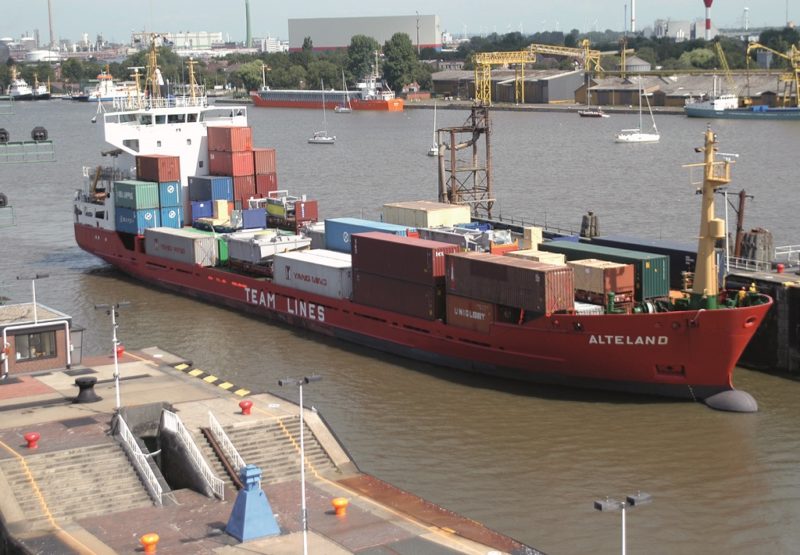
SUMMARY
The Kiel Canal had cost just over £8 million to build when opened in 1895, and a further £11 million for new longer locks built between 1907 and 1914, a total of £19 million, and of course this figure would be hugely higher in the inflated prices of today. Towage operations at the Port of Kiel are carried out by Svitzer Tugs, and the anti-pollution vessel Kiel of 465 gt and built in 1986 is always ready to tackle these issues in the waters of the Kiel Canal, the Port of Kiel and Northern German waters. There is an excellent viewing platform for visitors to the Kiel Canal and a museum on the south side of the canal at Holtenau Locks.
The Kiel Canal has always been thought to be ‘A Wonder of German Engineering’ for the last 130 years since its opening in 1895. It has its own good characteristics of a fresh water canal, a very clever system of traffic management, and a very useful short-cut between the North Sea and the Baltic Sea. It is very different from the Suez Canal which is a seawater canal without locks using convoy systems for both northbound and southbound vessels. It has little similarity with the Panama Canal, which uses some of the highest locks in the world to raise ships up to the fresh water Lake Gatun in the middle of the canal, and then another set of prodigiously high locks to lower and allow ships out at the other end.
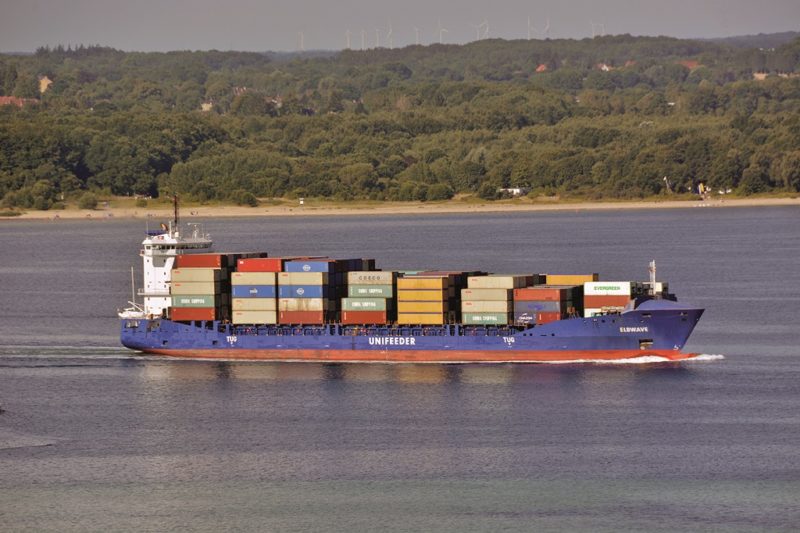


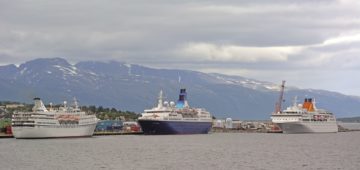



Comments
Sorry, comments are closed for this item